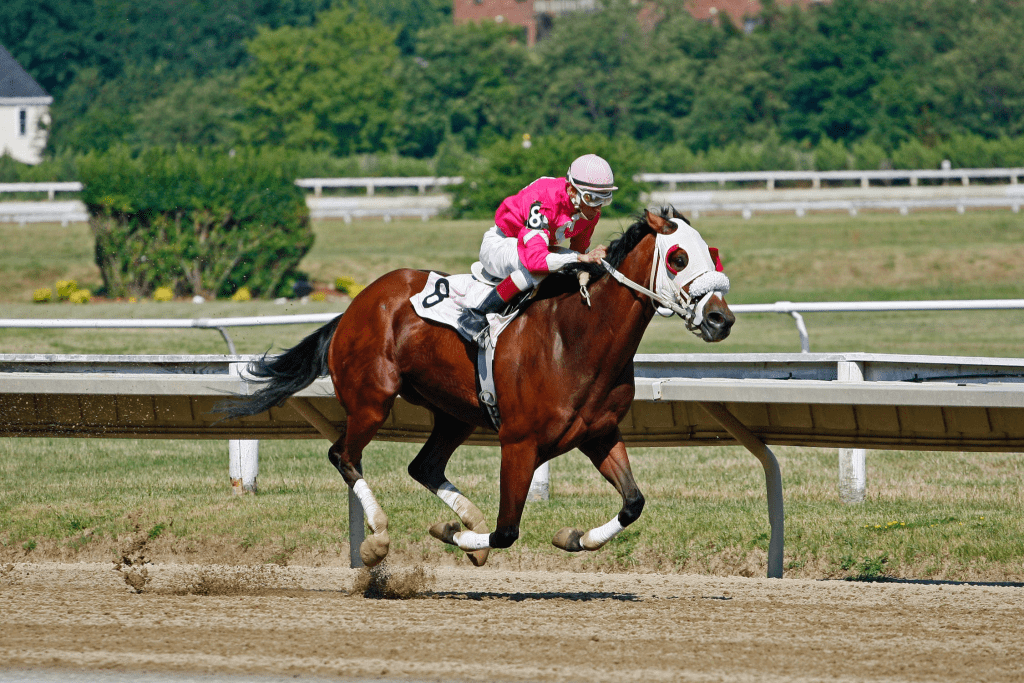Exploring the Different Running Styles of Racehorses

Horse racing is one of the world’s oldest and most exciting sports. For centuries, people have been fascinated by racehorses’ sheer speed, power, and grace as they thunder down the track.
But while all racehorses share a common goal – to cross the finish line first – not all horses approach the race similarly. There are a variety of different running styles that racehorses can employ, each with its advantages and disadvantages.
In this article, we will explore the different running styles of racehorses and discuss how each style can impact a horse’s performance on the track.
Front Runners
Front runners are horses that like to be at or near the front of the pack right from the start of the race. They have a natural speed and prefer to dictate the pace of the race rather than chase after other horses.
One of the most famous front-running horses of all time was Secretariat. The legendary colt won the 1973 Belmont Stakes by an incredible 31 lengths after leading from start to finish. Other well-known front runners include American Pharoah and Zenyatta, who were both skilled at maintaining their lead throughout the race.
If you’re participating in the derby betting 2023 and thinking of wagering on a front-runner, it’s essential to consider the horse’s past performances and how it has fared when leading from the start. Factors like the horse’s speed, stamina, and race length can also affect its chances of success.
Stalkers
Stalkers are horses that prefer to stay a few lengths behind the front runners in the race’s early stages. They conserve their energy and wait for the right moment to make their move, typically during the final stretch.
One of the most famous stalker horses was Seabiscuit, known for his ability to patiently wait for the right moment to surge ahead and win races. Other well-known stalker horses include Curlin and California Chrome, also skilled at tracking the pace of the race and making a late surge to the finish line.
Stalkers are best suited for races with a fast pace up front, which can tire out the front runners and give stalkers a chance to make a move in the latter stages of the race. Look for races with multiple horses with a high early speed rating, increasing the likelihood of a fast pace.
Understanding the tendencies and preferences of stalkers can be helpful for bettors, as it gives you a better grasp on which horses to bet on and how to predict their performance in different race scenarios. Stalkers can also provide excitement and drama in a race, as they often move at a critical moment that can determine the race’s outcome.
Closers
Closers are horses that prefer to stay at the back of the pack for much of the race and then make a late move to catch up and overtake the front runners. They have a strong finishing kick and rely on their stamina and endurance to make up the ground in the race’s later stages.
Some famous closers in horse racing history include Zenyatta, who won 19 of her 20 career starts and was known for her powerful late surge, and Cigar, who won 16 consecutive races and often came from behind to snatch victory.
Closers can be exciting to watch, especially when they make a dramatic move in the final moments of a race. Understanding their running style and tendencies can also be helpful for bettors, as it can give you an informed decision on which horses to bet on and when to place those bets.
Pressers
Pressers can be particularly successful in races with a moderate pace up front. In these races, they can stay within striking distance of the front runners without using too much energy and then move in the stretch to take the lead.
They can also be successful in slower races, as they can accelerate quickly and cover up ground against the front runners. However, pressers do have some disadvantages as well. They risk getting boxed in or bumped by other horses as they stay in the midpack during the race’s early stages.
This can slow them down or even prevent them from making a move when needed. Additionally, if the pace is too fast or too slow, pressers may struggle to keep up with the front runners or may not have enough room to make a successful move in the stretch.
When betting with this kind of runner, look for thoroughbreds with a strong finishing kick that have also shown the ability to overtake the leaders in the race’s final stretch. Pressers rely on their ability to conserve energy and make a strong move in the stretch.
Takeaway
Understanding racehorses’ different running styles is crucial for horse racing enthusiasts and bettors. Each running style has unique advantages and disadvantages. By keeping these tips and strategies in mind, you can make more informed decisions and increase your chances of success when betting on horse racing.

“Evil coffee nerd. Analyst. Incurable bacon practitioner. Total twitter fan. Typical food aficionado.”











